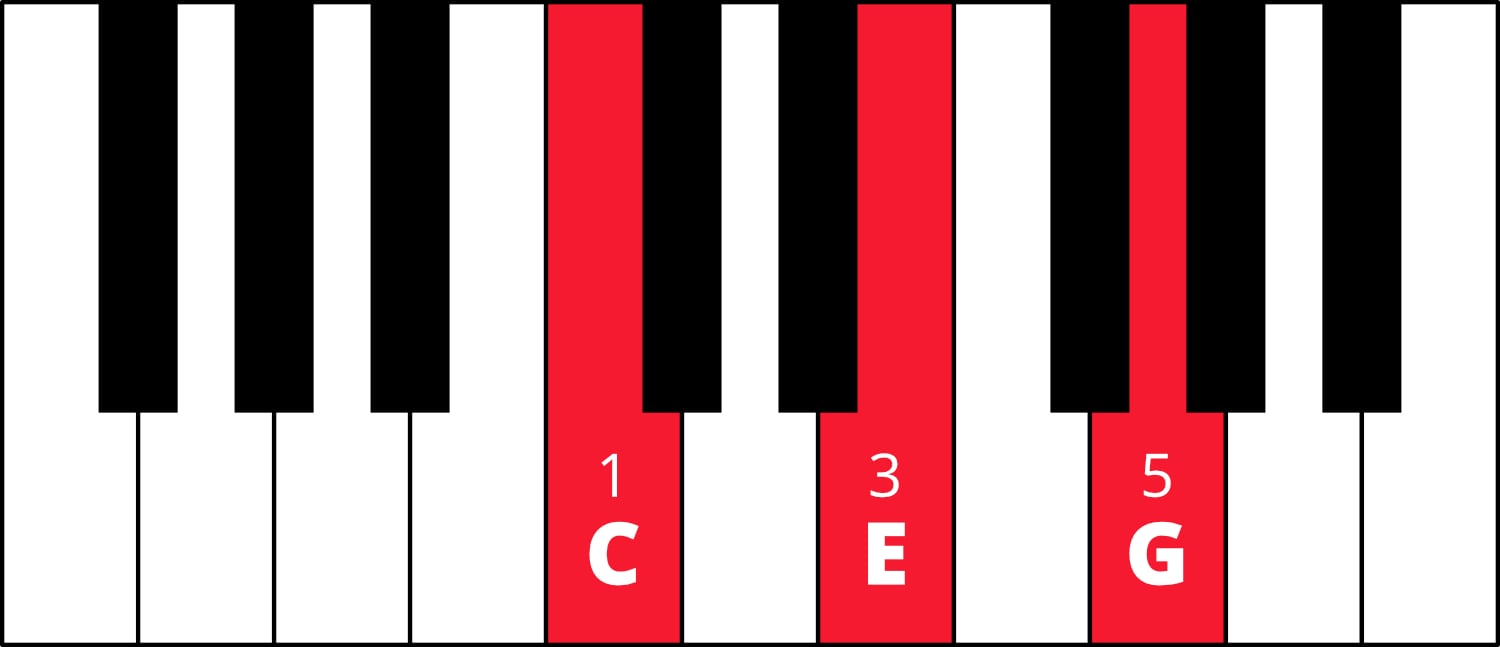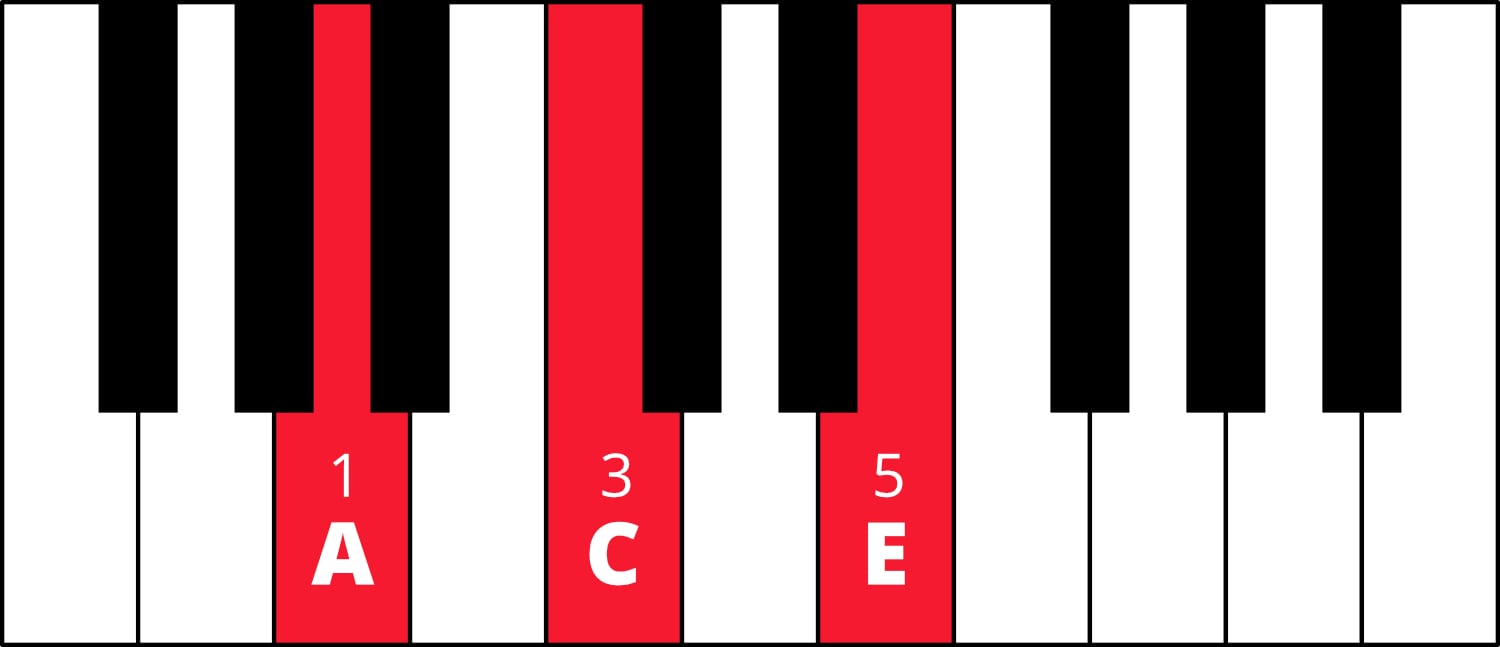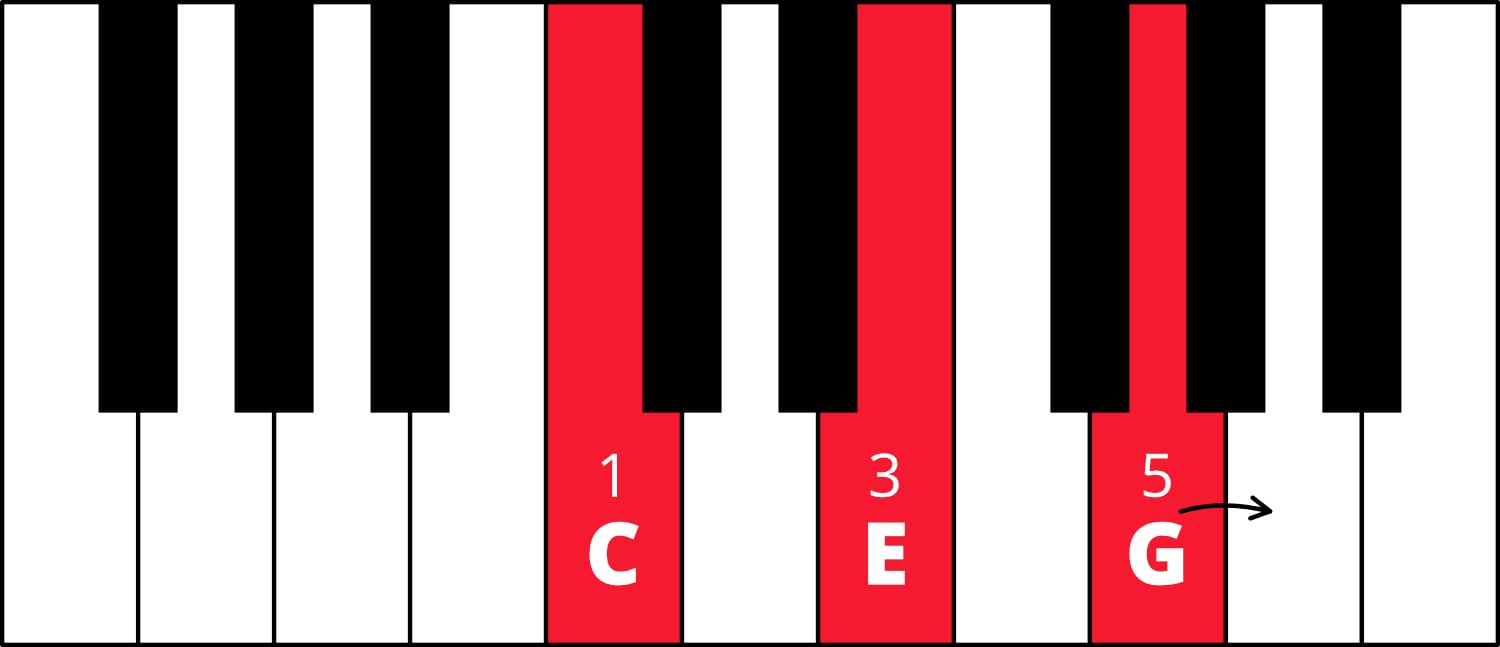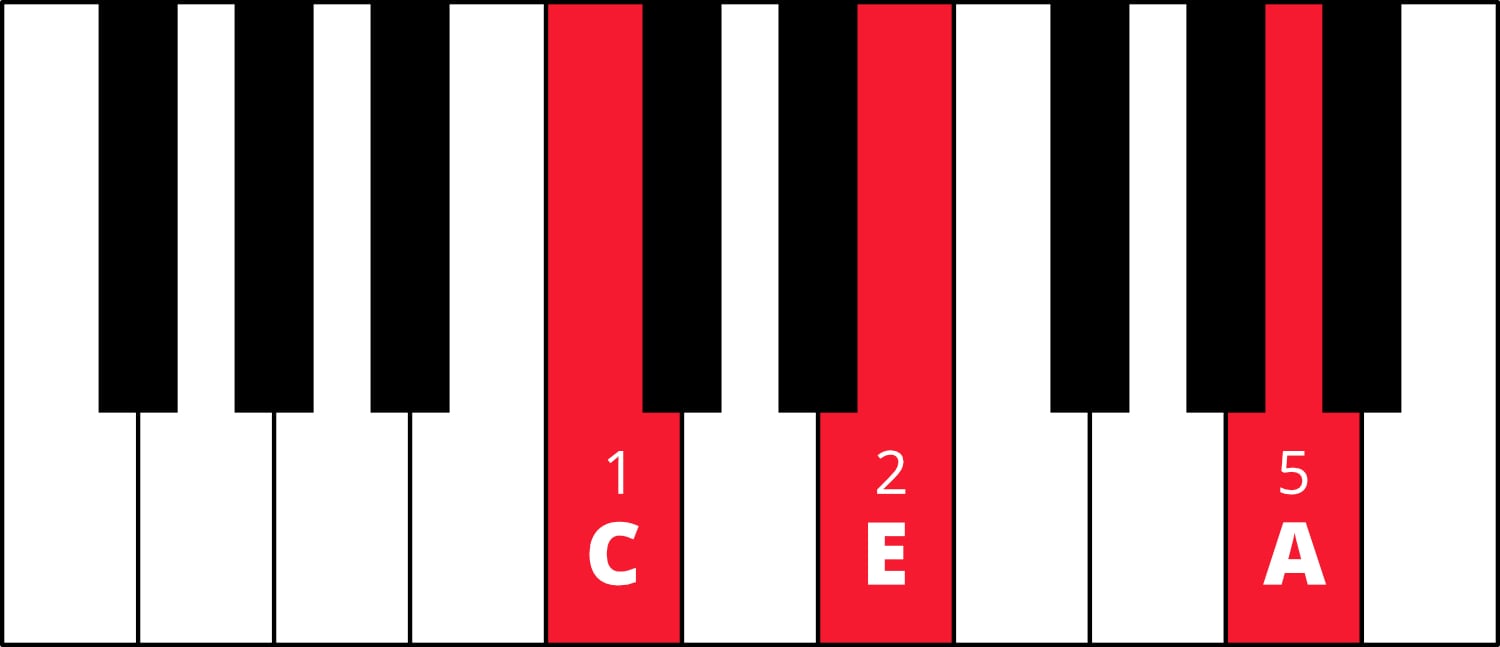If you’ve ever dreaded having to move big distances across your keyboard when chording a song, this lesson is for you!
I’ll show you shortcuts you can use to more efficiently hop from chord to chord.
We’ll be using the song “Perfect” by Ed Sheeran to practice with today. If you don’t know how to play “Perfect” yet, check out this tutorial. (Please note: we’ll be playing “Perfect” in a different key today, but the concepts here should work in any key.)
Did you know you don’t have to play the notes of a triad in the same order every time?
This is essentially what chord inversions are. Chord inversions are when we shuffle around the order of notes. This can be helpful because sometimes, it’s easier to go from chord to chord using inversions than it is to move from root position to root position.
For example, this is what the C major triad looks like in root position.

And this is what the A minor triad looks like in root position.

Going from C major root position to A minor root position can be clunky because you have to lift and re-position your hand across the keyboard.
However, going from C major root position to A minor 1st inversion (C-E-A) is more efficient because you only have to move one finger — your 5-finger — from G to A.
This is because C major and A minor have two notes in common, C and E. Look how easy it is to move from C major to A minor when you use inversions!


If you’re just starting out with chords and chord inversions, it may feel overwhelming to keep track of all these chord-stacking possibilities!
That is very understandable, which is why I suggest you practice going from one chord to another when you spot an opportunity for a shortcut. Pick out and focus on this transition, then practice it on its own.
Here’s me practicing going from C major root position to A minor first inversion.
…And here’s me practicing going from A minor first inversion to F major 2nd inversion elsewhere in the song.
If you’d like to learn more about how chord inversions work, check out our thorough lesson on them here. We also have practice ideas to help you get to know your inversions 🙂
Besides allowing you to transition more efficiently from chord to chord, using chord inversions as shortcuts will also make your performance more interesting. This is because inversions sound slightly different to our ears from root position chords.
Having extra choices when you’re chording a song will also give you a bigger “sound palette” to work with.
Experiment. Explore. Mix and match inversions. Pick an inversion to use based on efficiency, sound, or both! I hope you have fun with this new skill, and happy practicing!
Lisa Witt has been teaching piano for more than 20 years and in that time has helped hundreds of students learn to play the songs they love. Lisa received classical piano training through the Royal Conservatory of Music, but she has since embraced popular music and playing by ear in order to accompany herself and others. Learn more about Lisa.


By signing up you’ll also receive our ongoing free lessons and special offers. Don’t worry, we value your privacy and you can unsubscribe at any time.
We use cookies for traffic data and advertising. Cookie Policy »